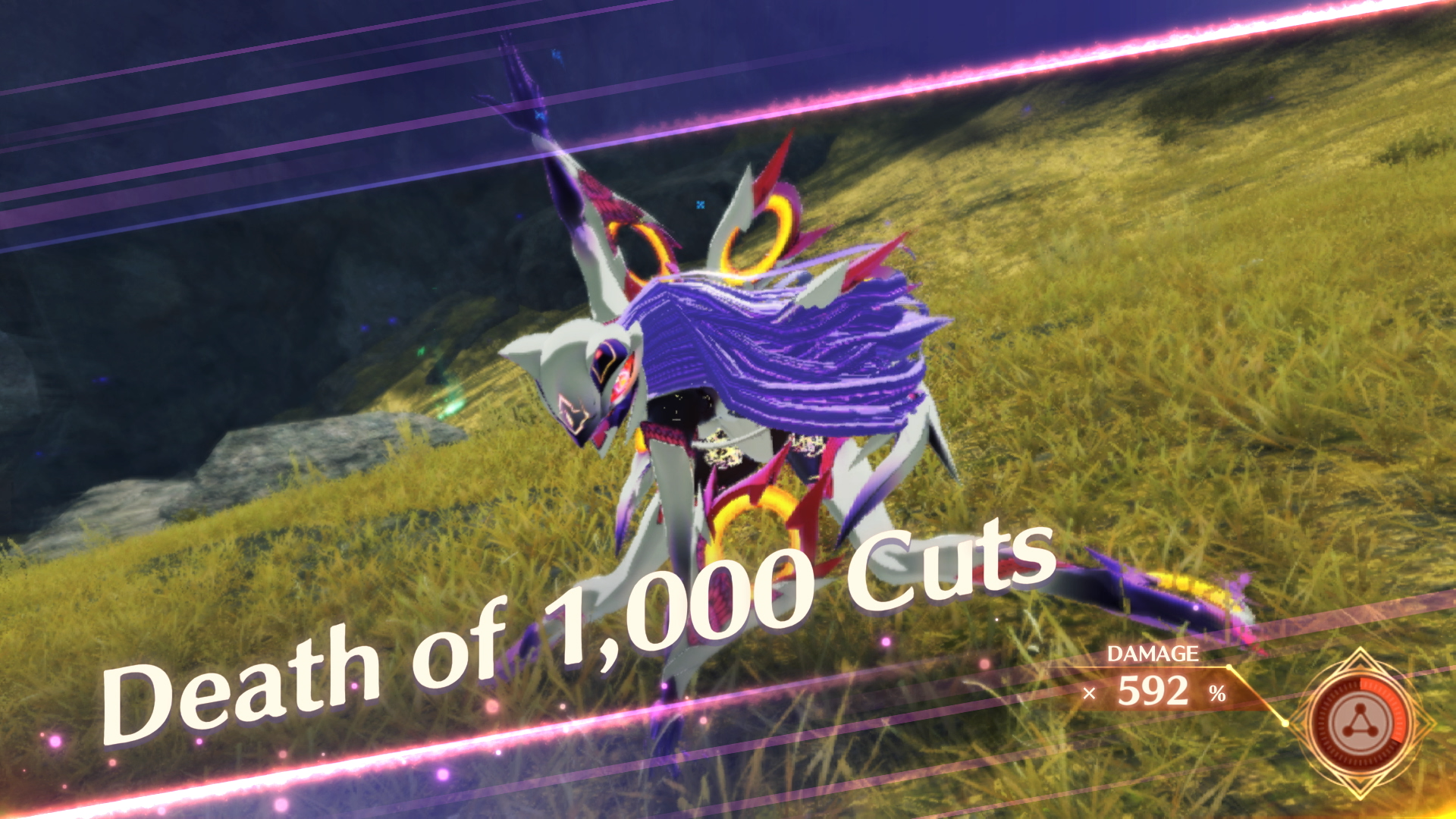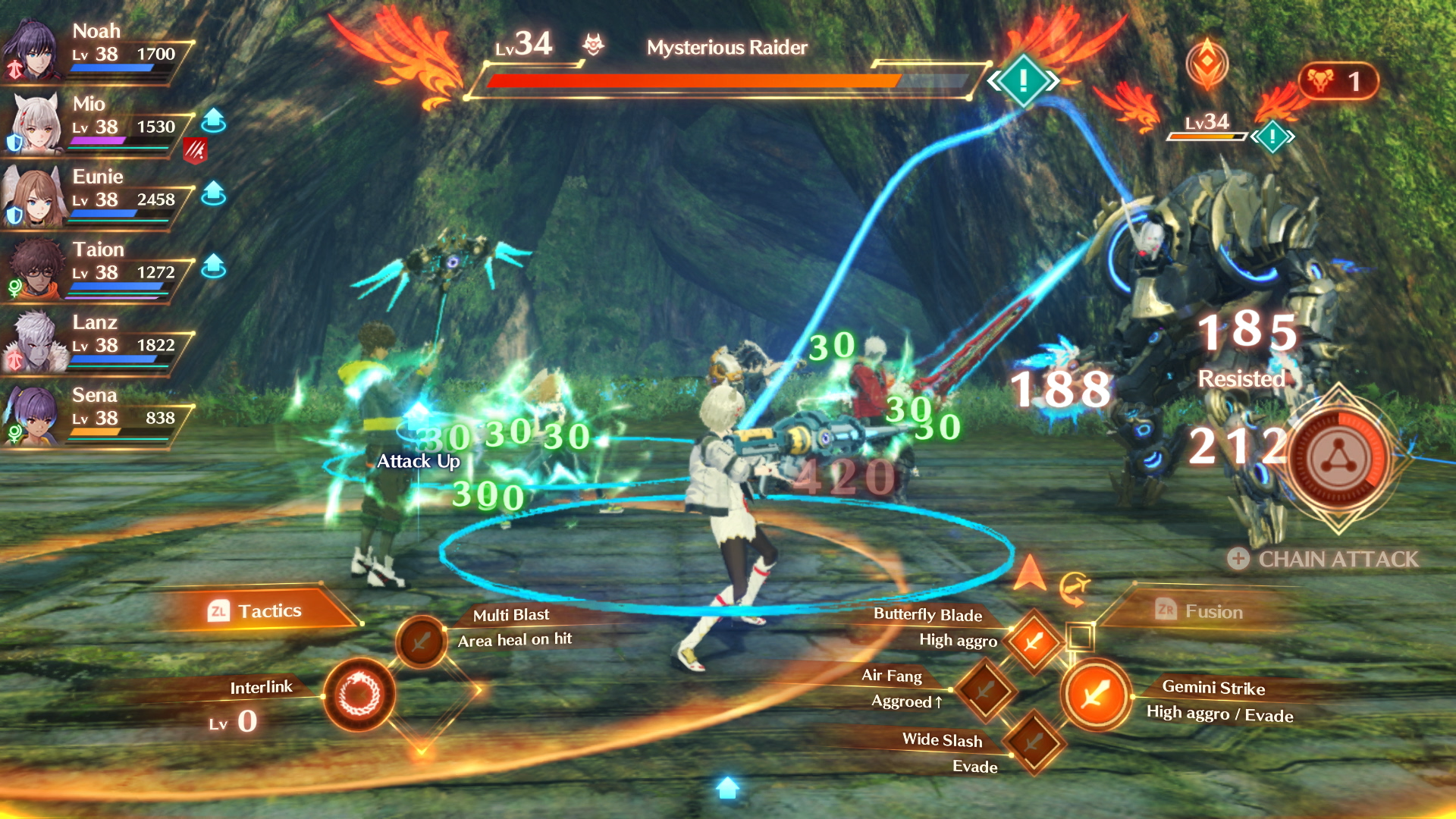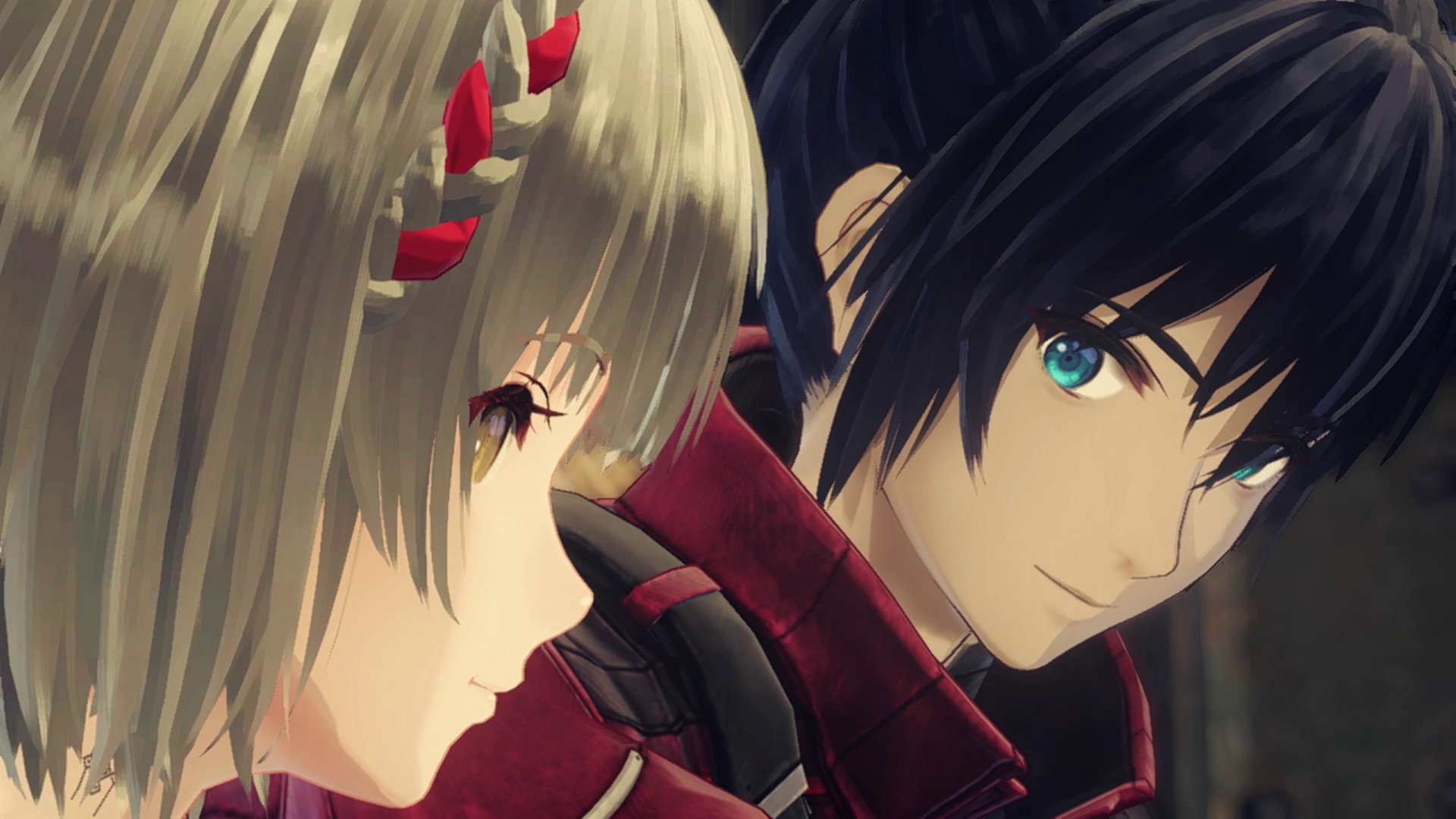I have played and enjoyed each chapter in the Xenoblade Chronicles series. Still, I wouldn’t exactly call the franchise one of my favorites. With its deep lore and complex combat system, the games are universally solid but also deeply challenging, making them a frequent delight to old hands but a bit of a fraught undertaking for more casual fans. After playing Xenoblade Chronicles 3, though, I can honestly say I finally get it.
This most recent release is the first to fully click for me. Yeah, the plot is still lengthy and meandering, and the battle mechanics, each of which builds upon all those introduced before, are certainly a lot to digest, but it’s the strength of the narrative that ultimately won me over in a way none of the previous games managed.

A passing knowledge of previous Xenoblade titles will certainly not hinder your play experience of Xenoblade Chronicles 3. You’ll quickly notice recurring touchstones like the cat-eared Gormotti, the winged Entia, and the rotund Nopon, not to mention the massive Mechonis sword that appears as the game’s dominant landmark. However, none of this is strictly required.
Never to be stingy with its story elements, Xenoblade Chronicles 3 hits the ground running, quickly establishing its central narrative. In the world of Aionios, the warring nations of Keves and Agnus rely on artificially created soldiers to fight a seemingly endless conflict. At best, these warriors are promised 10 years of life before returning to the Queen that “birthed” them. At worst, the enemy strikes them down in battle, and that life force is instead siphoned by the opposing side to power its diabolical Flame Clocks.
The Flame Clock is the axis upon which Xenoblade Chronicles 3‘s story turns. On the surface, they represent salvation through victory. Mirrored in the iris of each soldier, a full Clock is a badge of honor, a sign of a colony’s martial prowess. But as the Flame Clock burns down, it inevitably comes to symbolize the need for yet another fierce battle.

This changes after a fateful meeting between Noah, Eunie, and Lanz of Keves and Mio, Taion, and Sena of Agnus. Not only do they realize that their nations are far more alike than either anticipated—Noah and Mio are both off-seers, battlefield musicians who use song to memorialize (and, y’know, recycle) the dead—but, via Interlinking, they can literally join together, merging into the fierce and powerful creatures known as Ouroboros.
Finding themselves as outcasts distrusted by both sides, our protagonists come to understand that only the power of Ouroboros can end the tyranny of the Flame Clocks and break this cycle of constant war. And, of course, this also provides yet another layer to the combat of Xenoblade Chronicles 3.
Battle begins by simply approaching an enemy and unsheathing your character’s Blade using the A button—and let me tell you, enemies abound. In addition to the literal armies calling for your blood at the behest of a corrupt power structure, Aionios is resplendent with megafauna. This includes both normal monsters and higher level (and more difficult to subdue) elite, unique, and lucky variants.

The various elements of combat are tied to a character’s Class, which falls into one of three basic roles: Attackers (like Swordfighter and Ogre), Defenders (Zephyr and Heavy Guard), and Healers (the Tactician and Medic Gunner) whose primary purpose include dealing damage, drawing aggro, and using heals and buffs to keep fighters in the game respectively.
Class Arts offer stronger attacks mapped to the X, Y, and B buttons, with the even more powerful Talent Art mapped to A. While Class Arts recharge automatically, Talent Arts charge slowly over time in response to a character performing actions expected for their role. Characters are encouraged to change Classes once the current Class maxes out at level 10, which further helps to develop a more well-rounded fighting force.
Mastered Classes also unlock Master Arts, additional Arts that are mapped to the d-pad and aren’t dependent on the current character Class. Players can even create Fusion Arts, blending charged Class Arts and Master Arts by holding the ZR trigger. New Classes can also be unlocked by recruiting Heroes, characters who occupy the seventh slot in your party. Initially, each Hero will only unlock their unique Class for a single character, but by mastering it with them, you can open it up for the remainder of your party members.

Stringing together specific Arts creates Art Combos, even more robust attacks that increase enemy vulnerability. By skillfully deployed auto-attacks, Arts, and Combos, characters fill up the Chain Attack gauge, and pressing the + button affords them the chance to unleash devastating waves of accumulated damage.
All this is further supplemented by the Interlink command (mapped to the left button on the d-pad). This is how characters merge to form their powerful Ouroboros. Ouroboros can participate in Art Combos and Chain Attacks, and each can also manifest in two distinct forms with unique Arts all their own.
If this sounds complicated, that is simply because it is. Don’t believe me? Look no further than the game’s Targeting Lines. Red lines show that an enemy is targeting a Healer or Attacker, while blue indicates that a Defender is being targeted. Obviously, as this is sort of the Defender’s job, blue lines are what you want to go for, but when you’re facing multiple hostiles with a seven-member party, suffice it to say the battle screen HUD can get very cluttered. We’re talking multiple crisscrossing Targeting Lines, enemy names and levels, cascading damage and health numbers, on-screen overlays for the active character’s Arts, not to mention all the data for the rest of your party members along the left-hand side of the Switch screen. Yeah, it’s a lot.

But over-the-top combat is only one component of Xenoblade Chronicles 3. In between fighting (which you’ll do a lot of) and fully-voiced cut-scenes (which you’ll see a lot of), there is also exploration. Aionios is a great big, beautiful world, and you’ll spend dozens of hours exploring its various climes. In addition to established colonies—unsurprisingly, both Agnus and Keves use the same colony system—and countless husk-littered battlefields, you’ll find various Rest Spots scattered throughout the land. Here your party can rest, level up, and craft helpful food and gems with the help of your Nopon escorts.
The necessary components for crafting are generally easy to come by. Aionios is littered with raw materials ripe for the picking, not to mention the more exotic fare you can buy from merchants, collect from Supply Drops, and earn for completing Quests. Ether, an important commodity in its own right, can be harvested from glowing channels. The game also includes Nopon Coins, a secondary currency that can be used as a replacement component for crafting or to level up a character’s Class in a pinch.
Again, that probably sounds like a lot, because, again, it really is. In fact, if Xenoblade Chronicles 3 struggles at all it is simply underneath the sheer weight of its considerable offerings. It asks a lot of its players, but, to the game’s credit, it pays them back in kind. The environments are lush and inviting, and the entire world feels properly lived-in… like the war-torn planet it is. The music and voice acting are top-tier—even if some of the incidental stings and post-fight character dialog can get a little stale after you’ve heard them the ninth or tenth time in a single play session. Similarly, the ability to mix and match Classes, Master Arts, and equipment gives each party member an unbelievable level of granularity.
But what makes the game truly worthwhile, what continued to drive me even throughout its later hours—where the usually scant load times became longer and much more frequent—is the remarkable skill with which this title was crafted. Xenoblade Chronicles 3 is a work of art, a story that deserves to be told.
I genuinely cared about Noah and Mio, about Eunie and Lanz and Sena. (Hell, after a point I even began to care about the stuffy, studious Taion!) I was invested in their success because their mission had real stakes. Freeing comrades on both sides of the war from their Flame Clocks cut them off from their allies, their culture, and their very purpose. It gave them freedom at the very real expense of their tentative (but tangible) security. Further, each Clock smashed and each colony liberated served to make both the player’s party and the colonists themselves a bigger target for the sinister forces that pull the strings in this age-old conflict.
By uncovering what really lies at the heart of Keves-Agnus war, Xenoblade Chronicles 3 has a lot of interesting, relevant things to say about the nature of real-world warfare. It explores who truly benefits from systemic injustice and why powers well beyond the scope of the kids on the front lines would be more than willing to sacrifice countless young bodies to feed their infernal machines. It’s about how calculated separation inevitably serves the oppressor, and how we’re all stronger together.
More than that, it says much about what success, fulfillment, and even victory mean to the individual after a painful but wholly necessary break from an unjust system.
Xenoblade Chronicles 3 has it all—tons of action, mysteries and betrayals, a dash of romance, and even a little well-placed humor—but what it has in abundance is heart. And that makes it a must-play for Xenoblade fans, RPG enthusiasts, and anyone who loves a good story.
Review materials provided by Nintendo of America. This post contains affiliate links. Sena is my homegirl.




